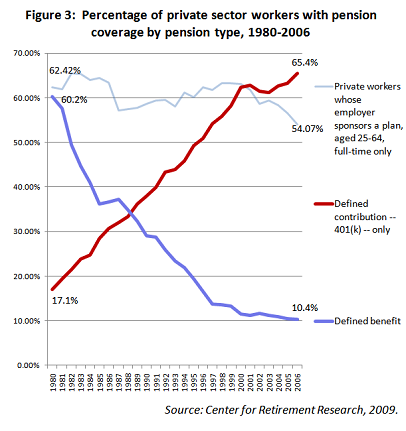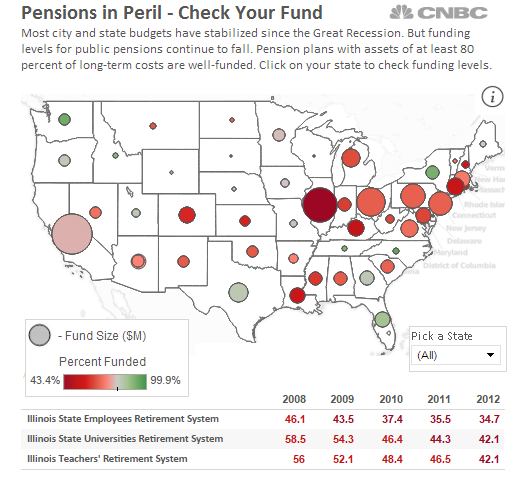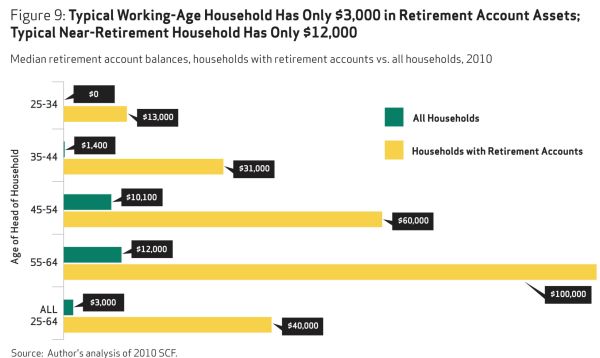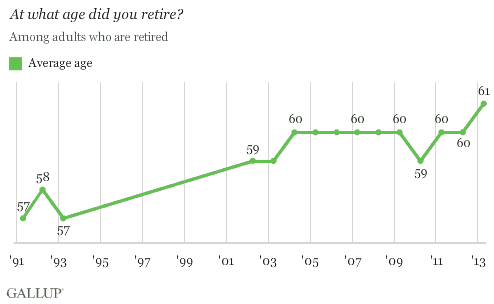Sirota argues that states' public pension shortfalls are a manufactured crisis by conservatives and big business, caused by years of states' chronic under-funding of pension funds while giving tax breaks and subsidies to business:
Public pensions face a 30-year shortfall of $1.38 trillion, or $46 billion on an annual basis. This is dwarfed by the $80 billion a year states and cities spend on corporate subsidies.
As usual, conservatives' go-to "solution" for a "crisis" is more cuts.
Sirota cites one state example that I've mentioned already:
Perhaps the most famous illustration of the pervasiveness of this deceptive argument comes from Detroit, Michigan. When the city recently declared bankruptcy, much of the media and political narrative around the fiasco simply assumed that public pension liabilities are the problem. Few noted that both Detroit and the state of Michigan have for years been spending hundreds of millions of dollars on wasteful corporate subsidies.13 Worse, the very same political leaders pleading poverty to demand cuts to municipal pensions were simultaneously promising to spend more than a quarter billion taxpayer dollars on a professional hockey arena.
And now conservative idealogues in the states are treating everywhere like Detroit:
But as outrageous as the blame-the-pensioners mythology from Detroit is, it is the same misleading mythology that is now driving public policy in states across America. In Rhode Island, the state government slashed guaranteed pension benefits while handing $75 million to a retired professional baseball player for his failed video game scheme. In Kentucky, the state government slashed pension benefits while continuing to spend $1.4 billion on tax expenditures. In Kansas, the state government slashed guaranteed pension benefits despite being lambasted by a watchdog group for its penchant for spending huge money on corporate welfare “megadeals.”
Sirota reveals a devilish bait-and-switch is at work here:
The goals of the plot against pensions are both straightforward and deceptive. On the surface, the primary objective is to convert traditional defined-benefit pension funds that guarantee retirement income into riskier, costlier schemes that reduce benefits and income guarantees, and subject taxpayers and millions of workers’ retirement funds to Enron’s casino-style economics. At the same time, waging a high-profile fight for such an objective also simultaneously helps achieve the conservative movement’s larger goal of protecting profligate corporate subsidies.The bait-and-switch at work is simple: The plot forwards the illusion that state budget problems are driven by pension benefits rather than by the far more expensive and wasteful corporate subsidies that states have been doling out for years. That ends up 1) focusing state budget debates on benefit-slashing proposals and therefore 2) downplaying proposals that would raise revenue to shore up existing retirement systems. The result is that the Pew-Arnold initiative at once helps the right’s ideological crusade against traditional pensions and helps billionaires and the business lobby preserve corporations’ huge state tax subsidies.
Kentucky offers a good example of the real problem, what this bait-and-switch is meant to protect by means of distraction:
... Kentucky’s $760 million annual pension shortfall is far less than the $1.4 billion a year Kentucky spends so-called “incentive programs” – much of them classic corporate welfare. These programs have included subsidies of $300 million to Ford Motor Company, $205 million to Weyerhauser and $110 million to United Parcel Service. They also include a $560 million subsidy to the mining industry. Meanwhile, thanks to Kentucky’s loophole-riddled tax code, profitable Kentucky-based Fortune 500 companies like Yum Brands and Ashland Inc. have during one of the last few years paid no state income tax whatsoever.
Thanks to corporate lobbying, Kentucky converted its defined-benefit public pension system into a cash balance hybrid system, while keeping corporate welfare.
Privatizing Social Security is their next aim, trust me!
By David Sirota
Institute for America's Future









